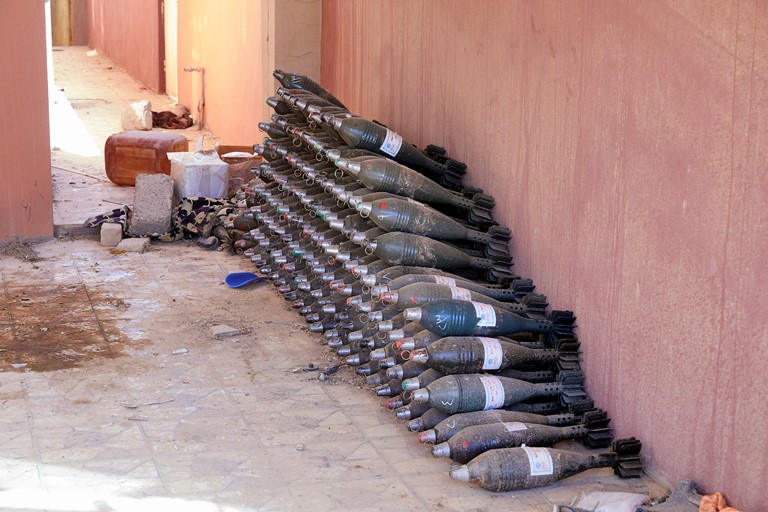|
Christians assess the damage on Iraq's Nineveh plain, ravaged by ISIS
Thursday, January 19, 2017
"I want to rebuild my life in Qaraqosh. This is my place, I shall remain here until I die."
By Jaco Klamer
“I DON’T
understand how people can harm each other so much,” sighs security guard Louis Petrus.
Petrus recently returned to his hometown for the first time: the Christian city
of Qaraqosh, near Mosul, which he had to flee on in August 2014, when ISIS
captured the town, the largest Christian city on the Nineveh plain.
He told
international Catholic charity Aid to the Church in Need: “Look at my house: it
is damaged, most of my furniture has been stolen and my household effects are
broken. Other inhabitants of Qaraqosh had prepared me for what I would find in
the city. I had heard stories and seen pictures of the destruction caused by
the jihadists. Now that I am seeing the city with my own eyes, I do not know
what to feel. The terrorists have destroyed a lot of my possessions.”
Father Sharbil
Eeso, a 72-year-old Syrian-Catholic priest also returned to the town. He found
the seminary in shambles. In search of hidden treasures, the occupiers brought
down ceilings and destroyed statues. “We are not allowed to clear up the mess
yet,” the priest said, adding that “first the damage needs to be assessed
carefully and documented thoroughly, and that can only start when the city is
safe. Last week, a jihadist emerged from the tunnel system which ISIS has built
underneath the city. The army immediately shot and killed him: it was a
13-year-old boy.”

The jihadists made
full use of the churches in Qaraqosh, even writing battle instructions on church
walls. Syrian-Catholic St. George’s Church Syrian Catholic was turned into a
bomb factory; hundreds of bombs and grenades, in all shapes and sizes, are still
lying there. There are also supplies of deadly chemicals, ingredients of
powerful explosives.
Like Father
Eeso, Louis Petrus firmly intends to return to Qaraqosh. He said: “I don’t want
to leave Iraq, unless all the inhabitants stay away and leave. But if two or
three families return to Qaraqosh, I will too. This is my country. As soon as
it is safe in the city and we receive permission to live here again, I want to
rebuild my life in Qaraqosh. This is my place, I shall remain here until I
die.”
“We really want to return to Qaraqosh, with
our children,” said the mayor of Qaraqosh, Nisan Karromi, but he added that “it
will be a long time before all damages will be repaired.” He added: “We not
only have to reconstruct and rebuild this city, but we also have to compensate
the people for the damages they have suffered. Now that the Iraqi government is
in crisis, the international community will have to help make Iraq habitable
again.” Another concern Christians have is that both the Iraqi government and
the Kurds—whose forces chased out ISIS—have designs on their land.
Manal Matti
recently visited the blackened church of the Immaculate Conception. She is
surprised by the mannequins that are spread out across the church grounds, shot
through with bullets. “The jihadists used the church as a shooting range and
the mannequins as targets,” she tells us, horrified. The woman used to run a
beauty salon, just steps away from the church. She pondered: “I do not know
when I will ever be able to see the inhabitants of Qaraqosh coming again to my
beauty salon.”
ISIS munition left behind in Qaraqosh; ACN photo by Jaco Klamer
|
|
|